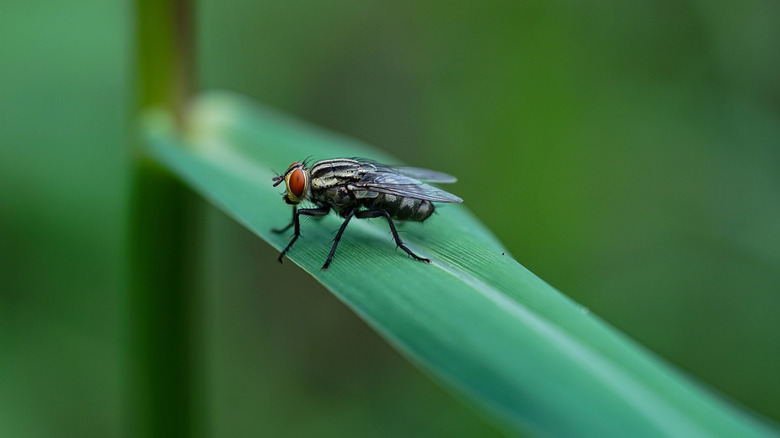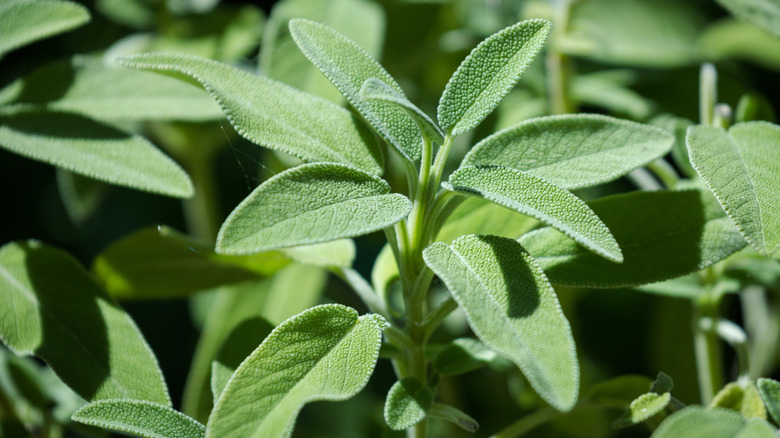Keep Unwanted Flies Out Of The Garden With An Earthy Aroma They Can't Stand
Flies might seem like a minor nuisance at first, but anyone who spends time in the garden knows how quickly they can take over. They buzz around compost bins, land on ripening fruit, and hover over your outdoor meals. Aside from being annoying, they also carry bacteria, making them a real concern for any space where food is grown or eaten. Once the weather warms up, fly populations can spike fast, and keeping them under control becomes a daily struggle.
That's where sage comes in. This fragrant herb might already have a spot in your kitchen, but its sharp, earthy aroma could help you get rid of flies in your garden. Sage belongs to the mint family and naturally produces strong-smelling oils like camphor and cineole, compounds known to mess with insects' ability to sniff out food and breeding spots. When planted near patios, entryways, or even close to your compost pile, sage can act as a natural barrier to reduce flies in the compost bin and other fly-prone areas
Still, it's important to keep expectations realistic. In a 2025 study from the Insects scientific journal, sage oil was shown to repel up to 94% of houseflies, but gardens are far less predictable. Factors like wind, plant placement, and the type of flies you're dealing with can affect how well it works. Sage can definitely help reduce fly activity, but it's not going to wipe out an infestation or replace good sanitation. For serious fly problems, it's best used alongside other strategies like removing food waste, reducing moisture, and calling in professionals if needed.
How to grow sage and use it to repel flies
Sage isn't fussy, which makes it a great herb for beginner gardeners. It thrives in full sun and well-draining soil. If your soil tends to stay soggy, mix in compost or sand – or plant sage in a pot with drainage holes to avoid waterlogged roots. For the best results, plant sage in early spring once the frost has passed, or in early fall if you want to give it a head start before cold weather sets in. To boost its fly-repelling powers, you can make a quick homemade insect repellent spray with sage essential oil.
To make use of the plant itself, start by crushing a handful of fresh or dried sage leaves to release their oils. Then, warm up a mild carrier oil like almond or sunflower on low heat, and toss in the sage. Let it gently cook for about half an hour, giving it a quick stir now and then. Once it's done, strain out the leaves and pour the oil into a labeled spray bottle or jar.
You can also burn dried sage bundles outdoors, almost like an herbal incense. The smoke helps release the plant's natural oils into the air, which can confuse flies' scent receptors and drive them off. Just be cautious to never burn sage near pets, children, or in enclosed spaces, and don't leave it unattended. Sage plants are generally safe around people and pets in the garden, but both smoke and essential oils (especially undiluted) can irritate skin, eyes, and fur.

